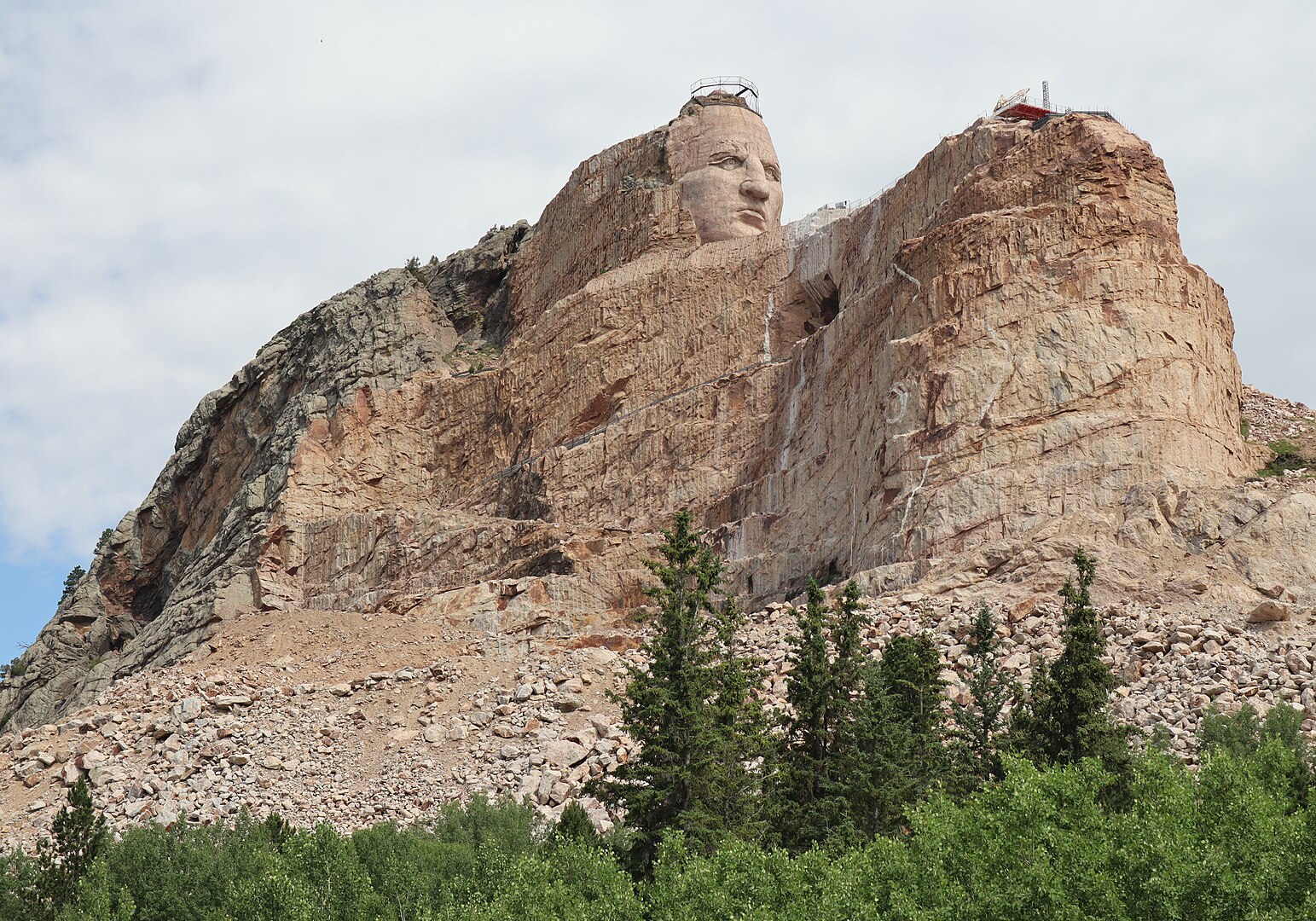The Crazy Horse Memorial is an enormous mountain carving under construction in the Black Hills of South Dakota, very close to Mount Rushmore. It is dedicated to Crazy Horse, an Oglala Lakota warrior and a leader who fiercely fought against the encroachment of the United States government on the territories and way of life of the Native American people during the 19th century.
This memorial was the vision of Polish-American sculptor Korczak Ziolkowski and Lakota Chief Henry Standing Bear. Chief Standing Bear invited Ziolkowski to the Black Hills to carve a mountain monument honoring Crazy Horse. The purpose of the memorial is to honor the culture, tradition, and living heritage of North American Indians.
Work on the Crazy Horse Memorial began in 1948, and when finished, it will depict Crazy Horse riding a horse and pointing into the distance. The completed sculpture will be massive, measuring 641 feet long and 563 feet high, which will make it the world’s largest mountain carving.
The project is led by the Crazy Horse Memorial Foundation and is a non-profit undertaking, relying on private funding through admissions, contributions, and the proceeds from its visitor complex. The complex includes the Indian Museum of North America, the Native American Cultural Center, the Sculptor’s Studio, and a sizable visitor center. Korczak Ziolkowski worked on the project until his death in 1982, after which his widow, Ruth Ziolkowski, took over the project leadership until her passing in 2014. The project is continued by their children and the Crazy Horse Memorial Foundation.
The Crazy Horse Memorial is not only a monument to one Native American hero but also a tribute to the spirit of all Native American peoples. It aims to educate visitors about Native American culture and serves as a reminder of their history and the challenges they have faced. The scale and ambition of the Crazy Horse Memorial mirror the significance that Crazy Horse holds for many Native Americans and those who support the project’s goals.

